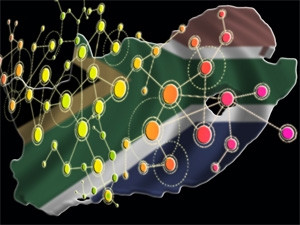
Industrial action, a financial crisis, criminal charges against former board members, delays with the payment of employee salaries, executive pay-outs, and the reality of an uncertain future are only some of the hurdles the South African Post Office (SAPO) is facing.
Despite this dire situation, the government entity will still be the distributing agent for set-top boxes (STBs) when South Africa finally migrates from analogue to digital terrestrial television.
Lehlohonolo Mokenela, ICT industry analyst at Frost & Sullivan, says government will have to resolve these issues as soon as possible, or face further delays in the digital migration process.
"The post office may perhaps have originally appeared a perfect fit to distribute the set-top boxes, given its relatively extensive distribution network and country-wide presence. However, so much has happened with the post office in the recent past, and still continues to happen," says Mokenela.
Why the post office?
Democratic Alliance (DA) MP Marian Shinn says SAPO was chosen years ago by the Universal Service Access Agency of South Africa (USAASA) to distribute STBs because of its extensive network of outlets in rural and urban areas that are easily accessible to the public throughout SA.
The idea was to use post offices as application points for those who qualify for free set-top boxes from government and to be the warehouse for distribution of STBs to these post offices. SAPO would also verify the status of STB applicants, including the ability to qualify for subsidies, explains Shinn.
Despite missing the June 2015 digital migration deadline, the Department of Communications (DOC) kicked off the migration registration process of poor TV-owning households that will receive free STBs in September, with SAPO as the distributor on behalf of government.
According to telecommunications, media and technology expert Spiwe Chireka, one of the key influencing factors in selecting the post office is reach, especially in the so-called underserved areas.
"In May 2015, the post office claimed to service 13.5 million households, which is about 93% of total households in South Africa. This is a pretty significant reach and would make sense to have the post office deliver or distribute the STBs," Chireka states.
"The entity needs any boost it can get and entering into service agreements with USAASA and the DOC would give it the much-needed financial boost it so badly needs," says Chireka.
Can it deliver?
Shinn says it's difficult to get clarity on exactly which divisions of SAPO are operating optimally, although in theory the SAPO logistics operation is well placed to do the job.
"There is so much uncertainty about staffing and securing operational expenditure. I have my doubts about SAPO being able to do the job at this stage. I hear the number of STBs approved for distribution at this stage is tiny so it would not be onerous to deliver this consignment. The amount is also relatively immaterial to the overall cash flow problems faced by the SAPO."
BMI-TechKnowledge analyst Tertia Smit says SAPO cannot sustain itself anymore through offering postal services.
"I think SAPO should be the distributor of STBs, as it is a way to assist SAPO, which is already unsustainable and has got serious revenue challenges.
"It has close to 2 500 outlets across the country, which is a wide footprint with infrastructure and resources that can be leveraged."
Turnaround strategy
According to Shinn, the turnaround plan approved by Parliament and tabled by the chairperson focuses heavily on cutting costs by reducing overheads, reducing staff numbers by around 5 000 people, rationalising routes and realising economy of scale on the one hand, and raising revenue by securing government business on the other.
However, SAPO is in dire straits, and these interventions are a case of too little, too late, she says. "As a result of last year's strike, SAPO has lost hundreds of millions of revenue, and countless customers have found alternative ways, including electronic, to deliver mail."
Chireka says the entity needs time to recover from the months of lost service during the prolonged strike that has left it in the doldrums.
"You can't expect to shut your doors for 12 months and miraculously come back and boom you are ready to roll. The thing to note is that the post office offers a service that is still relevant to the public and therefore will not 'run out of customers', and more so with the pending STB distribution deal," she notes.
Smit adds the post office needs to focus on specific areas to ensure things are turned around, such as starting with strong leadership at board level, finalising critical executive vacancies, and developing a strategy that is well thought out to grow the e-business and other value-added benefits like STBs.
Multiple distributors
Shinn notes the decision to use the post office as STB distributor was part of government's plan to assist SAPO's revenue stream and keep costs in check, but no one organisation should be distributing the STBs.
"Open public tenders should be called for, from logistics companies operating on a provincial and/or regional basis to deliver locally under the supervision of a specialised and experienced logistics company that is chosen by open public tender," she comments.
Chireka says government must ensure full reach of STBs to the most remote areas in the country, which requires the need for a backup or supporting entity for distribution.
She notes: "There are two aspects that make it tricky to clearly pinpoint the substitute or backup: the post office has the much-needed reach to ensure sound distribution. Second, the entity could use all the help and business to recover from the months of turmoil."
Share